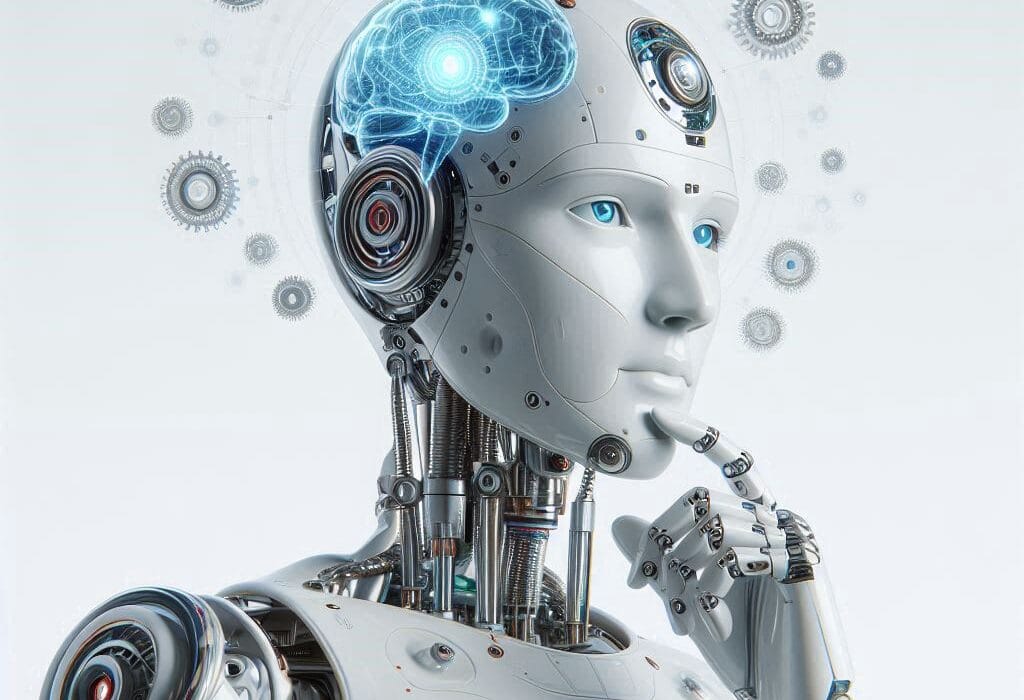Artificial Intelligence is no longer the stuff of science fiction. It’s in your phone’s camera when it recognizes a face, in your email when it filters spam, and in your streaming service when it recommends the next show you didn’t even know you wanted to watch. For some, AI feels like a mysterious force — a black box of incomprehensible algorithms. For others, it’s a career-defining opportunity.
For those about to step into this field, the road ahead can look intimidating. Strange-sounding terms like neural networks, gradient descent, and reinforcement learning swirl together like an alien language. But AI, at its heart, is a human creation — built on curiosity, trial, and the desire to make machines learn from the world just as we do.
If you’ve ever wondered how to break into this world, the journey begins not with genius-level mathematics, nor with expensive hardware, but with the first spark of curiosity. That spark must be nurtured into skill, and skill into mastery. This is a story of how to take that first step and keep walking until AI is not just a thing you use, but a thing you create.
Understanding the Heart of AI
Before diving into code, it helps to understand the essence of what AI actually is. AI is not a single technology. It’s a broad term covering the ability of machines to mimic aspects of human intelligence — learning, reasoning, and adapting. Within AI lies the more specific field of Machine Learning (ML), where computers are trained on data to make predictions or decisions without being explicitly programmed for every possible scenario.
In traditional programming, you feed the computer rules and data, and it gives you answers. In machine learning, you feed it data and answers, and it figures out the rules. That difference changes everything — because it allows machines to adapt, improve, and handle complexity in ways that manual coding never could.
Even more specialized is Deep Learning, inspired by the structure of the human brain, which uses multi-layered neural networks to tackle incredibly complex problems like image recognition, speech synthesis, and autonomous driving.
Knowing these distinctions early on helps you see the terrain ahead. AI is the umbrella, ML is the core engine, and deep learning is the cutting-edge powerhouse for the toughest tasks.
Building a Foundation in Mathematics and Logic
The romance of AI often comes from its applications — self-driving cars, voice assistants, AI art — but under the hood, it’s mathematics that drives the magic. This can be daunting if you haven’t touched math in years, but the good news is that you don’t need to master every advanced theorem before you start.
The pillars of AI’s math are linear algebra, calculus, probability, and statistics. Linear algebra lets you work with vectors and matrices, which form the basic data structures for most ML algorithms. Calculus — especially derivatives — helps in understanding how models optimize themselves by adjusting parameters. Probability and statistics form the language of uncertainty, which is at the heart of making predictions in an unpredictable world.
Even more important than knowing every formula is developing the mindset to break down a problem logically, test ideas, and understand why a method works. This mathematical literacy will give you the confidence to read research papers, understand algorithms, and eventually invent your own.
Choosing a Programming Language
Once you have the conceptual foundation, you’ll need a tool to bring your ideas to life. For AI, Python reigns supreme. Its clean syntax makes it accessible for beginners, and its vast ecosystem of AI and ML libraries — such as TensorFlow, PyTorch, scikit-learn, and Keras — allows you to implement sophisticated models with just a few lines of code.
Learning Python for AI doesn’t mean becoming a full-fledged software engineer overnight. You need just enough proficiency to manipulate data, write functions, and experiment with algorithms. Along the way, you’ll pick up habits of clean coding that will save you headaches later when your projects grow in complexity.
Learning by Doing
The fastest way to internalize AI concepts is not just to read about them, but to build with them. When you first code a linear regression model to predict housing prices or train a neural network to recognize handwritten digits, you’re not just learning syntax — you’re learning how machines “see” the world.
Projects give you feedback. They show you what you understand and what you don’t. They turn abstract theory into concrete results, even if those results are imperfect at first. You’ll encounter errors, data that refuses to cooperate, and models that stubbornly refuse to learn. These are not failures, but the raw material from which true expertise is forged.
Understanding Data: The Lifeblood of AI
An AI model without data is like a brain without experience — it cannot learn. Data comes in many forms: images, text, audio, numerical records. The process of collecting, cleaning, and preparing this data often takes far more time than building the model itself.
You will need to learn how to handle missing values, normalize features, and split your dataset into training and testing subsets to avoid fooling yourself into thinking your model is better than it is.
The relationship between data quality and AI performance is intimate and unforgiving. The old adage “garbage in, garbage out” applies with brutal honesty here. High-quality, relevant, well-prepared data is the difference between a model that’s insightful and one that’s useless.
Exploring Algorithms and Models
Once you’re comfortable with basic projects, it’s time to explore the landscape of algorithms. In supervised learning, you’ll encounter linear regression, decision trees, random forests, and support vector machines. In unsupervised learning, clustering methods like k-means and dimensionality reduction techniques like PCA open up new ways of seeing patterns in unlabeled data.
Then there’s deep learning: convolutional neural networks for image tasks, recurrent neural networks for sequential data like speech or text, and transformers — the architecture behind many of today’s most powerful AI systems.
Each algorithm is like a different lens on the world, making certain patterns sharp while others blur. Learning when to use which tool is part of the artistry of AI.
The Power of Practice and Consistency
There’s a temptation to believe that once you’ve read enough books or taken enough courses, you’ll “know AI.” But mastery in this field comes less from passive absorption and more from steady, deliberate practice.
Consistent engagement keeps your skills alive. If you spend weeks away from coding, the syntax will fade, the logic will feel rusty, and the math will need dusting off. On the other hand, even 30 minutes a day of focused practice compounds quickly into substantial expertise.
Joining the AI Community
The AI field is too vast to explore alone. By joining communities — online forums, open-source projects, local meetups — you gain more than technical help. You gain perspective, encouragement, and a sense of belonging to something larger.
Platforms like GitHub let you see and contribute to real-world code. Discussion boards like Reddit’s r/MachineLearning or specialized Slack channels expose you to debates, insights, and emerging trends.
Collaboration sharpens your skills in ways solo work never can. Explaining your code to others forces clarity; reviewing someone else’s teaches you alternative approaches.
Ethics and Responsibility in AI
As you grow in skill, you must also grow in awareness. AI is powerful, but power without responsibility leads to harm. Models can inherit biases from their training data, leading to unfair or dangerous outcomes. Systems can be misused for surveillance, misinformation, or exploitation.
Understanding AI ethics is not optional. It’s an essential part of the profession. This means questioning your dataset: who collected it, under what circumstances, and with what implicit assumptions? It means thinking about the consequences of deploying your model in the real world.
A responsible AI practitioner balances innovation with caution, excitement with humility.
Staying Current in a Fast-Moving Field
AI evolves at breakneck speed. What was state-of-the-art two years ago may now be a historical footnote. To stay relevant, you must make continuous learning part of your routine. Reading research papers, following reputable AI blogs, attending conferences, and experimenting with new tools keeps your skills fresh.
But don’t confuse chasing trends with chasing understanding. The deeper you grasp the core principles of AI, the easier it becomes to adapt to whatever the field throws at you next.
The Journey Ahead
Getting started in AI is like learning to navigate a vast, ever-changing ocean. At first, the waves of complexity seem overwhelming. But as you practice, you learn to read the currents — to know when to tack, when to hold course, and when to let the wind carry you.
Every expert in AI today was once a beginner staring at their first “Hello, World” script. The difference between those who make it and those who give up is not raw talent, but persistence. The patience to wrestle with a stubborn bug, the humility to learn from failure, the courage to start a project without knowing exactly how you’ll finish it — these are the real markers of success in AI.
When you write your first AI program, you are not just making a machine learn. You are teaching yourself to think in new ways. You are becoming part of a centuries-old tradition of human beings building tools to extend the reach of our minds. And you are helping shape a future in which intelligence — human and artificial — works together to solve problems we can only begin to imagine today.
The first step is yours to take. The rest of the path will reveal itself as you walk.






